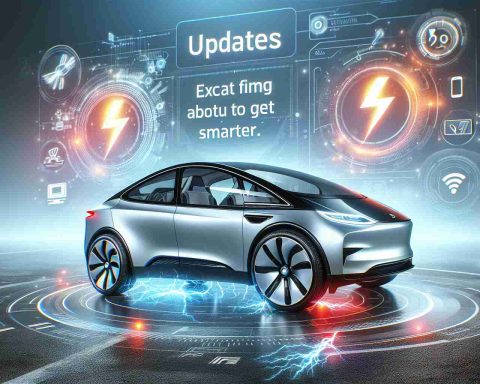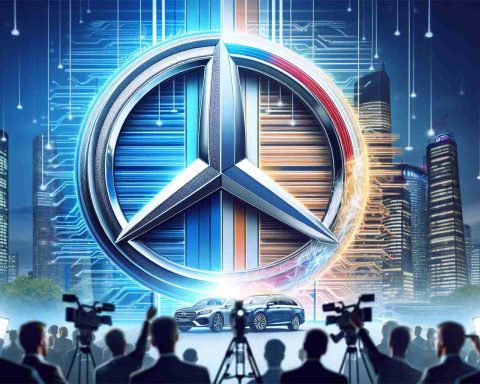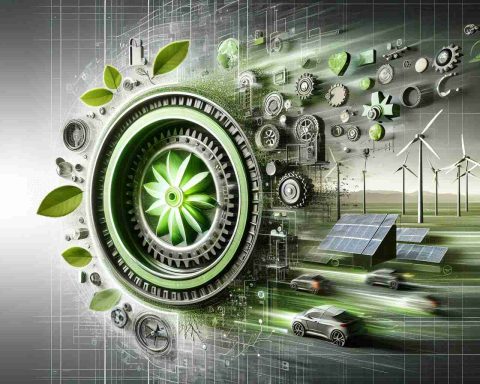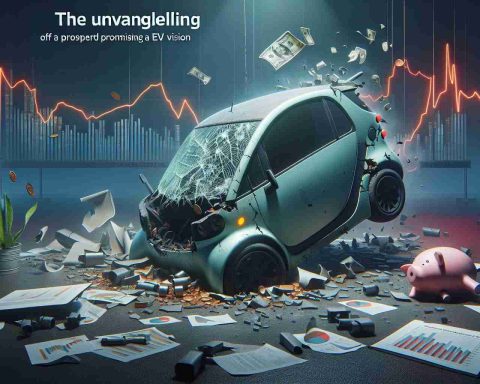The Latest Breakthroughs in Tesla’s FSD Technology
Tesla’s AI division is buzzing with activity as significant improvements to Full Self-Driving capabilities are on the horizon. Following the release of FSD version 12.6.1 for Model Y vehicles, there are renewed discussions about the capabilities of Hardware 3, which, contrary to speculation regarding its obsolescence, is receiving ongoing enhancements.
A major upcoming feature is the introduction of reverse functionality for HW3-equipped vehicles. Recent insights from Tesla’s CEO indicate that this new capability aims to refine AI performance during reversing maneuvers, a task currently limited to specific situations like AutoPark. This advancement means that drivers will soon experience improved automation in complex driving scenarios that necessitate backward movement.
As anticipation builds around the Tesla Cybertruck, attention is also drawn to its FSD capabilities. While it features autonomous parking, it’s still lacking in the reverse department; users eagerly await upgrades to ensure that all Tesla models eventually enjoy these essential FSD enhancements.
Looking ahead, speculation suggests that the Reverse feature could either lead to a significant version update or a smaller tweak in the FSD system. Tesla’s continued dedication to developing these functionalities hints at a future where their vehicles boast even greater autonomy. This relentless pursuit of improvement not only reshapes personal transportation but also opens doors to a new realm of integrated urban mobility solutions.
The Societal Implications of Advancements in Tesla’s FSD Technology
As Tesla pushes the boundaries of Full Self-Driving (FSD) technology, its advancements resonate beyond individual users, impacting society and the global economy in profound ways. Self-driving capabilities not only promise to reshape everyday commutes but also signal a shift in labor dynamics, particularly in industries reliant on driving, such as freight transport and taxi services. A projected loss of jobs in these fields could catalyze significant economic shifts, necessitating reskilling and adaptation strategies for affected workers.
Moreover, the integration of advanced FSD features may lead to safer roadways. Studies suggest that increased automation could reduce traffic accidents caused by human error, which accounts for over 90% of crashes in the United States. This reduction has potential long-term benefits for public health, lowering emergency response costs and improving overall societal wellbeing.
From an environmental standpoint, the adoption of autonomous vehicles could enhance the efficiency of urban travel, thereby reducing congestion and emissions. Cities might reimagine transportation frameworks, transitioning towards more eco-friendly systems if FSD technology gains traction. Future developments could include electric fleets operating under optimized algorithms to minimize energy use.
In summary, Tesla’s strides in FSD technology extend far beyond vehicular enhancements, inviting considerations of societal transformation, labor market upheaval, and environmental stewardship. As the dream of fully autonomous driving edges closer to reality, its ramifications could redefine our approach to mobility and urban living.
Unveiling the Future of Tesla’s Full Self-Driving Technology: What You Need to Know!
The Latest Breakthroughs in Tesla’s FSD Technology
Tesla is at the forefront of advancing autonomous driving technologies, particularly with its Full Self-Driving (FSD) capabilities. As the company continues to innovate, recent enhancements to FSD could redefine the future of personal transportation and automated driving solutions.
# Specifications and New Features
One of the most anticipated features is the introduction of reverse functionality for Full Self-Driving (FSD) equipped vehicles with Hardware 3. This capability will enhance the vehicle’s ability to navigate in reverse, a function that is currently limited to specific operations such as AutoPark. This breakthrough is expected to significantly improve AI performance in complex driving scenarios, adding a layer of sophistication to Tesla’s autonomous driving suite.
# Use Cases for Enhanced Reverse Functionality
The upcoming reverse feature promises to benefit a wide array of scenarios. For instance, it will allow Tesla vehicles to execute complex maneuvers such as parallel parking or navigating tight spaces in reverse, which are common challenges for drivers today. This enhancement may also streamline urban driving experiences, making it easier for users to park in crowded areas or maneuver in tight spots without human intervention.
# Comparison of FSD Versions
With the release of FSD version 12.6.1 for Model Y vehicles, users are curious about how this version compares to its predecessors. Not only does it feature increased reliability and improved decision-making algorithms, but the impending reverse functionality is set to elevate its capabilities further, distinguishing this version as a pivotal point in Tesla’s FSD evolution.
# Market Trends and Insights
The automotive industry is witnessing a shift towards increased levels of vehicle automation. As competitors invest heavily in their own autonomous driving technologies, Tesla’s continual updates to FSD may position it as a leader in the market. Analysts suggest that as FSD functionalities expand, the demand for fully autonomous vehicles will likely surge, influencing market dynamics.
# Security Aspects of FSD Technology
As Tesla expands its FSD capabilities, security will inevitably become a focal point. The integration of advanced driving features necessitates robust cybersecurity measures to prevent unauthorized access or manipulation of the vehicle’s operating systems. Tesla has been proactive in addressing potential security vulnerabilities, regularly releasing software updates to enhance both performance and security.
# Pros and Cons of Tesla’s FSD Technology
Pros:
– Continuous enhancements in AI performance.
– Improved navigation capabilities in complex environments.
– Potential for increased safety through automation.
– Expanding functionality with versions, including reverse driving.
Cons:
– Concerns over dependency on technology.
– Security risks associated with autonomous systems.
– Current limitations in some autonomous features, particularly in reversing capabilities for certain models.
# Predictions for the Future
As Tesla continues to innovate within its FSD platform, we can expect more groundbreaking features and capabilities that could redefine how we approach personal and urban transportation. Insights into potential future updates suggest that other functionalities, such as improved recognition of obstacles and enhanced decision-making in ambiguous situations, are on the horizon.
For more on Tesla’s recent advancements and ongoing innovations, visit Tesla’s official website for the latest updates and news.














